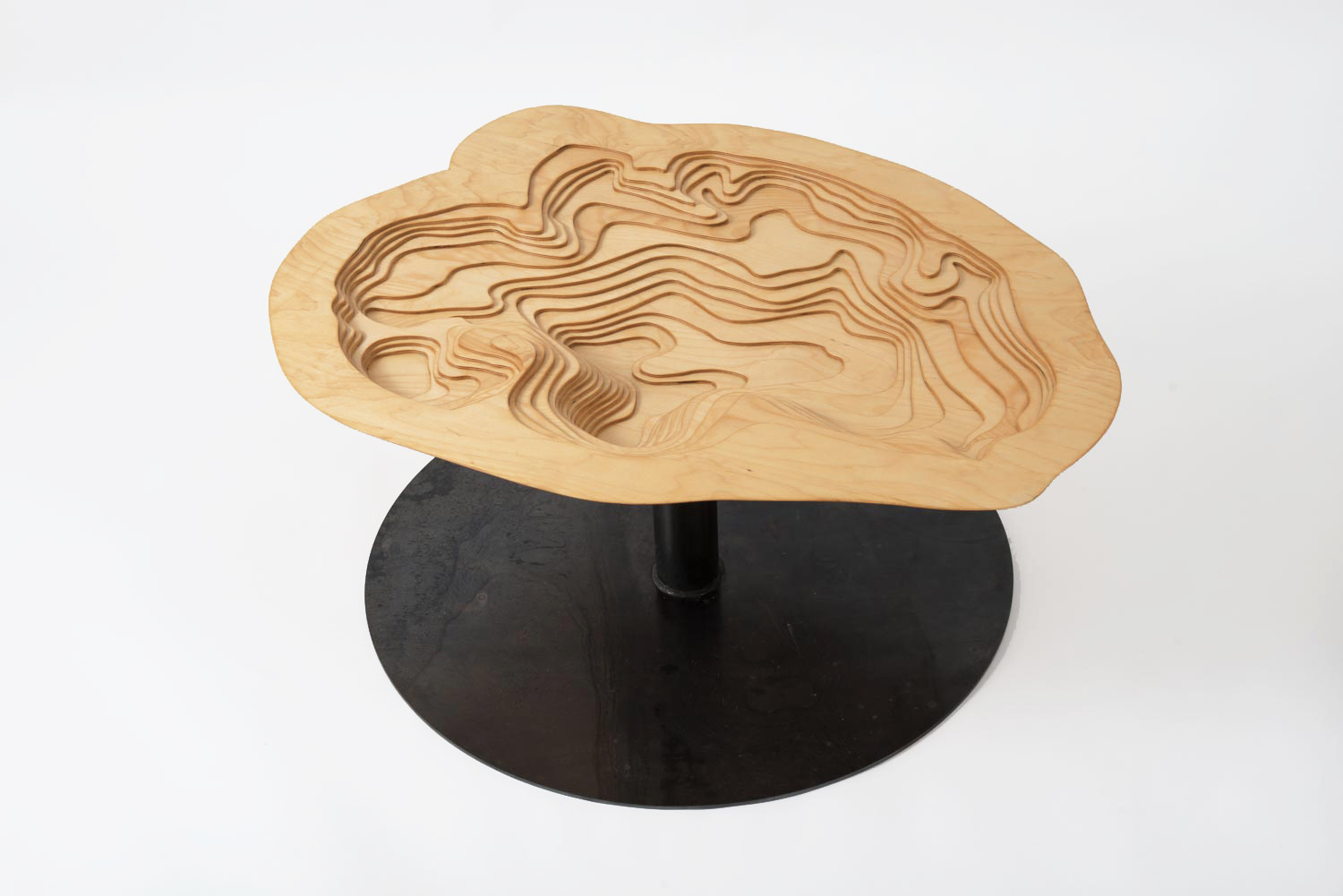Forget coffee table books. Graduate student Kevin Tousignant (Landscape Architecture) builds tables that are conversation starters in their own right!

Tables of the Lakes began as a yearning to see his designs come to life. “An unfortunate part of being a landscape architecture or architecture student is accepting the fact that you’ll be producing an incredible amount of work that will never be built,” he explained. “This project was a way to incorporate the design and technical skills I acquired from the MLA program and to apply them to a small scale project that I could see through to completion.” The result? Tables designed from topographical maps of the Chain of Lakes.
After conceptualizing variations of his designs in AutoCAD and Rhino, he began fabricating his first table.“I wanted to incorporate the CNC router from the start, as I knew it would help create the clean, highly crafted aesthetic I was going for. The router also runs off of Rhino, so it was fairly easy to take my idea from digital to physical form—essentially using the same program throughout the whole process,” Tousignant described.
He incorporated the project into his coursework through a directed study under Rebecca Krinke (Landscape Architecture). “The design of the tables was more or less figured out before I talked to her,” he said, “but we had some really thought-provoking conversations that led to the project also being an installation on water as a resource.”
Tousignant noted about half of Minnesota’s land is devoted to commercial agriculture, which calls for “huge amounts of fertilizers to yield profitable harvests.” Many of these chemicals end up in the Mississippi River or one of our 10,000 lakes, where they cause an influx of plant matter that uses up all of the available oxygen needed to support aquatic life. “This is being seen on a huge scale at the mouth of the Mississippi River in the Gulf of Mexico and is responsible for what is known as ‘The Dead Zone’—8,000 square miles of essentially lifeless ocean. So basically, what we are doing to create one food source is wiping out another. It’s really a full-circle issue that goes well beyond MN.”
How does he think artists and designers can help? By advocating for communities and lifestyles that are less dependent on commercial agriculture. “I’m not saying that everything we eat needs to come from our backyard or the farmer’s market, but any strategy to significantly cut back on commodity-driven agriculture would increase water quality everywhere.”
Tousignant is putting together a series of exhibitions this summer and expects the first will take place in June or July. Until then, follow his designs on Instagram @tablesofthelakes.
All photos © Kevin Tousignant
Early interaction with nature has been proven to increase children's capacity for creativity, critical concentration skills, and relationship building.
It’s one thing for your final project to stand up to final reviews, but quite another for it to withstand heavy outdoor use by generations of children!
After nearly three years of work, College of Design student group AIAS Freedom by Design installed and unveiled a set of playground instruments for Karner Blue Education Center this May.





